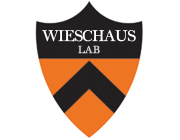The Heidelberg Screen for Pattern Mutants of Drosophila: A Personal Account.
Publication Year
2016
Type
Journal Article
Abstract
In large-scale mutagenesis screens performed in 1979-1980 at the EMBL in Heidelberg, we isolated mutations affecting the pattern or structure of the larval cuticle in Drosophila. The 600 mutants we characterized could be assigned to 120 genes and represent the majority of such genes in the genome. These mutants subsequently provided a rich resource for understanding many fundamental developmental processes, such as the transcriptional hierarchies controlling segmentation, the establishment of cell states by signaling pathways, and the differentiation of epithelial cells. Most of the Heidelberg genes are now molecularly known, and many of them are conserved in other animals, including humans. Although the screens were initially driven entirely by curiosity, the mutants now serve as models for many human diseases. In this review, we describe the rationale of the screening procedures and provide a classification of the genes on the basis of their initial phenotypes and the subsequent molecular analyses.
Journal
Annu Rev Cell Dev Biol
Volume
32
Pages
1-46
Date Published
10/2016
ISSN Number
1530-8995
Alternate Journal
Annu. Rev. Cell Dev. Biol.
PMID
27501451

